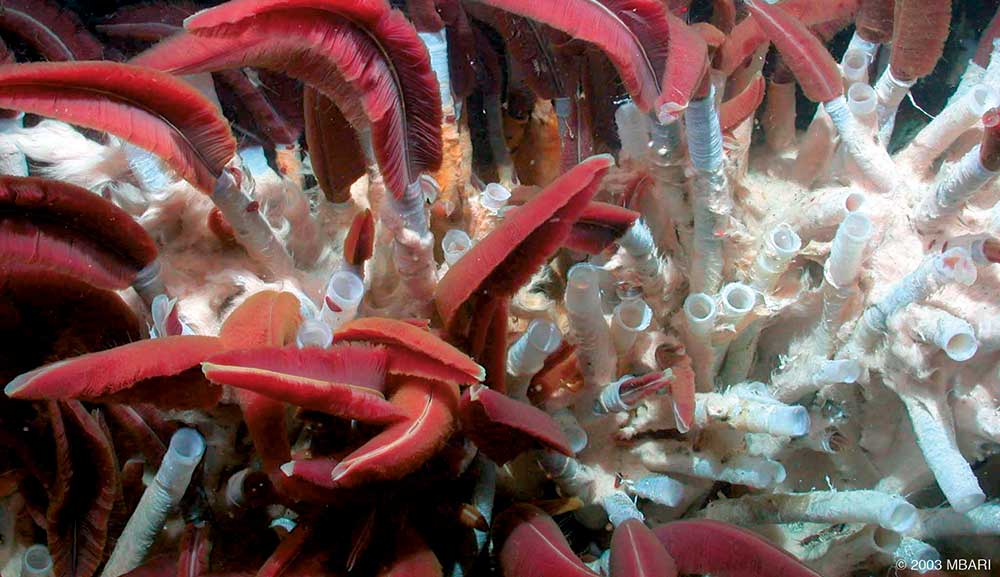“More men have walked on the moon than have dived to the deepest part of our oceans.” – Dr. Cindy Lee Van Dover
The deep sea is Earth’s largest reservoir of life but has remained largely uncharted by Man, with only 10 percent of the seafloor mapped so far. The Deep reveals the mysteries lurking in the deep through the display of perfectly preserved and extremely rare animals in crystalline details, accompanied by mesmeric images of captivating sea fauna and ethereal bioluminescent creatures, some photographed for the very first time. The Deep brings together the largest collection of deep-sea creatures ever displayed in South East Asia. Providing a unique opportunity to encounter the reality of the deep first-hand and to raise public awareness about the fragility of the deep sea ecosystem.
The Deep is presented in a unique, pitch–black environment, virtually immersing you onto the realm of the deep sea. It will unfold to reveal the different depths of the sea, such as life in the mid-water and life on the ocean floor through different themed zones.
Find out more in The Deep press release.
- About the Exhibition
- The Deep gallery
About the Exhibition

About the Animals
The specimens presented in The Deep are extremely rare. These fragile creatures are most of the time unrecognizable, as they are often damaged by nets during trawling. Several deep-sea fauna included in the exhibition have been captured in situ by scientific samplers on submersibles or tethered robots. Others have been carefully trawled during oceanographic missions conducted throughout the world. Some of the specimens on displayed are anglerfishes (the most famous deep-sea fish, thanks to Finding Nemo) and whole colonies of deep-sea radiolarians.
Some of the animals that are featured in the exhibition are:
Tiburonia granrojo
The Big Red
This large dark and velvety ball was discovered in 1993 by MBARI researchers in California. It is so different from other jellies that biologists had to create a new subfamily for it, called the Tiburoniinae, after the Tiburon, the robot that discovered them. To capture its prey, it does not use stinging tentacles, as do the majority of jellies, but deploys long fleshy arms whose number curiously varies between four and seven. Very little is currently known about this creature.
Careproctus longifilis
Threadfin snailfish
Similar to a prehistoric tadpole, this fish face is perforated with large sensory pores and seems to confirm the deep sea’s myth as a haven for fossil creatures that have remained unchanged since the dawn of time. Despite its strange looks, the threadfin snailfish does not number among the oldest sentinels of our planet, as do the horseshoe crab and the coelacanth, whose fossil records date back more than 250 million years ago.
Grimpoteuthis sp.
Dumbo octopus
Researchers have already described fourteen species of Grimpoteuthis, but beyond the taxonomic description, these octopuses for the most part are still very enigmatic. They are often observed resting on the bottom, with their mantle spread around them. What are they doing there, sitting so quietly in the dark? Nobody knows.

Display Methodology

Bloom Association
Founded by Claire Nouvian in 2005, BLOOM is a non-profit organization that works to protect the oceans and the fishermen than depend on them through a process of raising awareness and explaining environmental problems using scientific mediation, by producing relevant and independent scientific studies, as well as by participating in public consultations and institutional processes. BLOOM’s actions target both political and economic decision-makers, as well as the general public.
For more information, visit here.

Claire Nouvian
Claire Nouvian is the curator of the exhibition, The Deep, and the creator of the book under the same name.
In 2001, then wildlife and scientific film director Claire Nouvain visited the Monterey Bay Aquarium in California, USA. She watched a film with spectacular images of sea fauna that live up to 4,000 metres beneath the surface. Fascinated by this new world, Nouvian began to collaborate with some of the world’s most respectable to create an extensive and unprecedented archive of abyssal images and specimens, many of which had never been seen by the public.
Claire Nouvian is president and founder of the nonprofit conservation organization BLOOM, based in Paris and Hong Kong. She developed BLOOM association as an institution to advocate the protection of the ocean’s fragile ecosystem and to combat destructive fishing practices. Her area of research and activities focus on deep sea fisheries and shark consumption habits.
In 2012, Claire Nouvian was named “Environmental Woman of the Year” in the “Femmes en Or” awards. Before starting BLOOM Association, Nouvian worked in television production and journalism specializing in wildlife and scientific documentaries. She holds a Bachelor of Arts degree in history from Sorbonne University in Paris.




